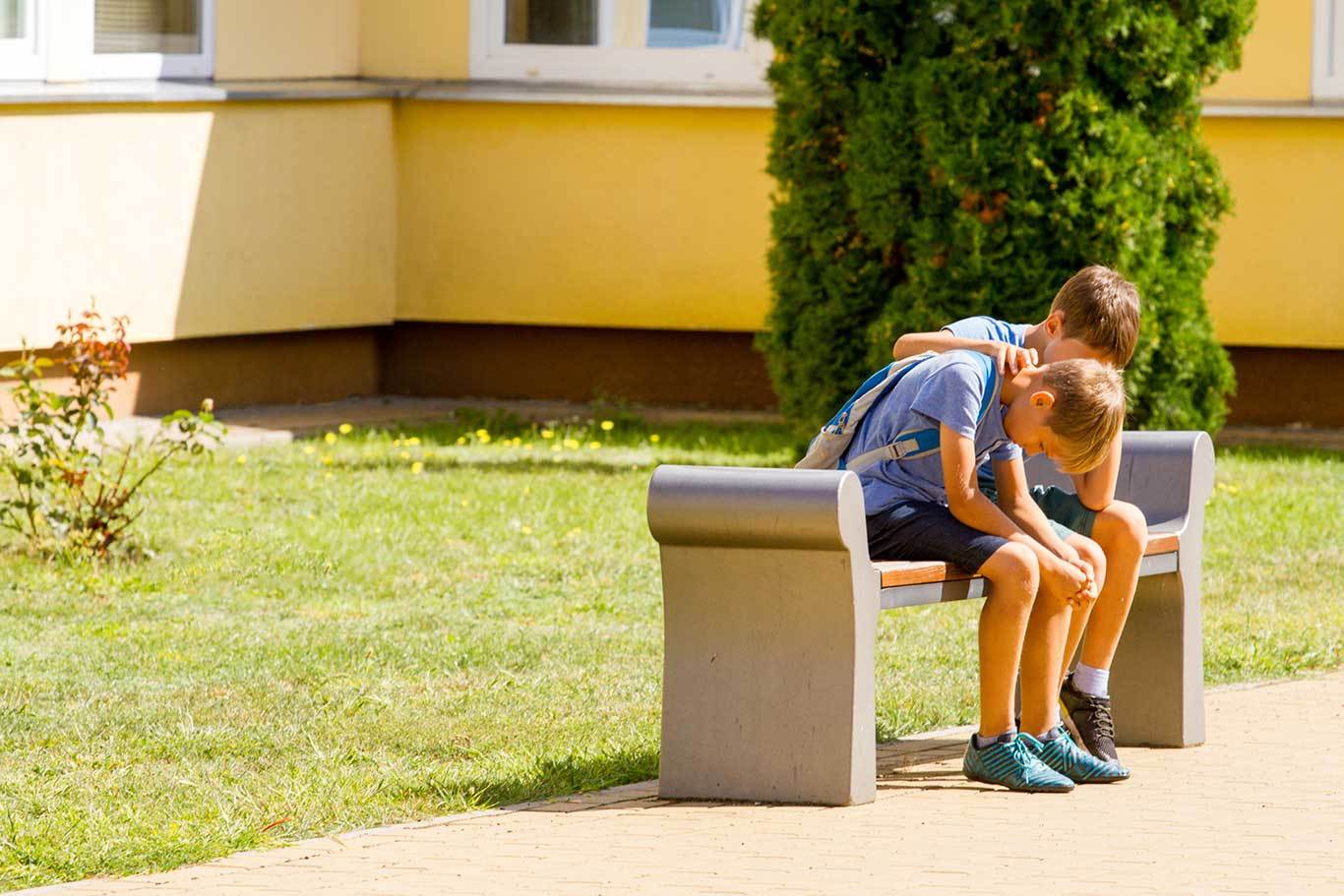There's No Such Thing As One Person
Without mutually stimulating interactions, people and neurons wither and die.

One foundational concept of attachment theory is the idea that there is no such thing as one person. This concept first emerged in the early 1900s when doctors noticed the high rates of death among infants raised in orphanage settings. Their conclusion was that there was a connection between these infant deaths and high infection rates, and advised that these infants be touched or handled as little as possible. The decreased physical contact did lower rates of infection but many infants were still dying. This led to the realization among psychologists and physicians alike that without almost constant interactive regulation of the brain and body through mutual stimulation, an infant cannot survive.
In his mid-century research, Dr. Rene Spitz coined the term “hospitalism,” a syndrome in which infants who were separated from their primary caregivers for longer than 5 months faced catastrophic developmental consequences and even death. This same line of research eventually concluded that attachment is circular, not linear, and when there is a permanent break in this circle, survival is unlikely. Without being held, rocked, and related to, humans cannot physically or emotionally grow, and there is evidence that this reality continues throughout the lifespan (as evidenced by increased disease and death related to loneliness and isolation among adults). Dr. Louis Cozolino explains in The Neuroscience of Human Relationships:
“The individual neuron or a single human brain does not exist in nature. Without mutually stimulating interactions, people and neurons wither and die...From birth until death, each of us needs others who seek us out, show interest in discovering who we are, and help us feel safe. Thus, understanding the brain requires knowledge of the healthy, living brain embedded within a community of other brains: Relationships are our natural habitat.”
Dr. Louis Cozolino
The Neuroscience of Human Relationships
Learn about Empathy School & our other programs
LEARN MOREHuman Connection is Essential For Survival
As a species, we are defined by what my dear friend calls our “very togetherness”: we are families, webs, flocks, classes, communities, and collectives. We become who we are as individuals through our connections with one another. Our brains are built through what is called interbrain activity. Interbrain is the scientific term for the constant intuitive communication that occurs between attached humans. In infancy, this “shared intuitive channel of communication,” or the interbrain, consists mostly of shared eye contact, touch, vocalization, and shared feelings. This constant engagement amounts to an almost continuous sense of what an infant might be needing or feeling.
If you are a parent, you might remember the first time you were separated from your infant for more than a few hours. Did you have the sense that something was “missing” or did you catch yourself automatically scanning for your baby’s cries? Your instinct to “look for” your baby is simply the interbrain trying to encourage you to get back “within range” of your infant. In this way, the interbrain acts as a powerful “wireless connection” between humans, helping us to both monitor and soothe one another (Shanker, 2016). Early in life, for survival purposes, this connection is fairly short-range, and infants need constant connection with us to stay regulated. Eventually, though, a stable, uninterrupted connection between two humans forms into what is called a secure attachment.
As we mature, we can maintain this secure attachment connection at longer and longer distances; without even being physically in the same place, we can hold one another in our hearts, and draw safety from one another without being together. Being safe and soothed allows us to grow emotionally, take on challenges, and curiously explore the world, again creating the foundation for individual flourishing and resilience.

Self-Awareness Builds Emotional Intelligence
As our brain matures, our interbrain activity is also enhanced through verbal communication and complex language, and more complex and deeply resonant emotional contact becomes possible. Maturity also brings mutuality. Connection between two mature brains (such as in friendship or romantic attachments) allows for more “giving and receiving,” a sense of mutual regulation and a separate-but-togetherness. As mature adults, the ability to tell one another how we feel or what we are experiencing, in addition to eye contact, touch, and other nonverbal signals, gives us a sense of being felt, seen, known, and soothed through relationships. This does not negate our need for healthy boundaries and a strong sense of self; rather, our personhood is enhanced by our attachments to others. We are held together through invisible strings running between our brains and hearts, and the spaces between us can be seen not as voids but as invisible networks of love and safety.
While the innate desire to be connected in this way is universal in humans, many of us haven't had the opportunity to develop secure attachment relationships in our early developmental experiences. For those of us without that secure attachment experience in childhood, when we experience ruptures or inconsistencies in our current relationships it can be difficult to go back to them for safety or to be soothed. Our brains have adapted to traumatic circumstances by creating relationship patterns that keep us safe, and as result our emotional reaction to conflict is either high activation (entangled attachment) or low activation (avoidant attachment). Intimacy is difficult when survival is prioritized by the brain. While these patterns have helped us to survive difficult experiences, they can create problems in our ongoing relationships. The good news is that the brain can re-adapt to secure attachment patterns across the lifespan.
The good news is that the brain can re-adapt to secure attachment patterns across the lifespan.
No matter your age or background, the following personal work can help you reach new stages of social and emotional development:
- Making sense of your story. Being able to construct and process your attachment story helps your brain to build self-awareness and self-compassion, and also be more emotionally available to others.
- Experiencing subsequent secure relationships (perhaps with a therapist, teacher, friend, or partner) in which you can practice the four skills of secure attachment [Giving Care, Receiving Care, Practicing Autonomy, Negotiating Needs]
And here are some simple connectedness meditation practices you can use to practice self-compassion and find calm in the storm.
Connectedness Meditation Practices
If you have a history of avoidant attachment or a traumatic attachment history, your sense of self may have been defined more around the lack of being held, felt, and seen. If this is true, the following meditation practices may help you to practice self-compassion and the felt sense of being in close connection with others.
Attached at the Heart: Envision your heart and the heart of someone you love. Envision a string between your heart and the heart of your loved one. Take slow, deep breaths as you gently focus your attention on the string. Imagine what the string might look like or feel like. Imagine running your finger along the string, tracing the distance between the two hearts. Continue to take deep breaths as you focus your attention for 5-10 minutes.
Heartbeat Sync: Sit in a comfortable position. Hold your right hand over your heartbeat. Hold your left hand in front of you, as if you are feeling the heartbeat of someone sitting across from you. Envision someone you love (or even someone you struggle to love) sitting comfortably across from you. As you “place” your hand over the other person’s heart, imagine the feeling of that person’s heart beat. Imagine your heartbeats in sync with one another and gently rest your attention on the synchronized beats. If you are comfortable, you can also try this exercise with a closed loved one such as a child or partner. It doesn’t have to be serious; children may find this exercise to be delightfully silly as well an opportunity for shared joy.
At FuelEd, our mission is to provide resources and immersive experiences to facilitate this healing and transformation. We also invite you to explore the benefits of counseling to support you as you take the next step in this work. Building and nurturing secure attachment is a lifelong journey, but thankfully our brains are sensitive to new experiences far beyond our early years, and growth and healing are always possible.
Join us in harnessing the power of relationships in your own life and community!
Bring FuelEd to your school, district, or organization
SCHEDULE A CALLExplore other articles by FuelEd Partner Kelley Munger
READ MOREAbout the author
Kelley Munger
PhD, LPC, NCC
Kelley holds a BA in English from Auburn University, an MA in Teaching from Lee University, and an MA in Counseling Psychology from Covenant Seminary. She completed her PhD in Early Intervention and Special Education at the University of Oregon in 2019. Kelley is a researcher and licensed therapist working in the areas of trauma, adult attachment, special education, and human development. She is passionate about leveraging the power of relationships to promote developmental flourishing across the lifespan.
Kelley holds a BA in English from Auburn University, an MA in Teaching from Lee University, and an MA in Counseling Psychology from Covenant Seminary. She completed her PhD in Early Intervention and Special Education at the University of Oregon in 2019. Kelley is a researcher and licensed therapist working in the areas of trauma, adult attachment, special education, and human development. She is passionate about leveraging the power of relationships to promote developmental flourishing across the lifespan.




